In the world of polyethylene plastics, three leading players take center stage as key Polyethylene Grades: High-Density Polyethylene (HDPE), Linear Low-Density Polyethylene (LLDPE), and Low-Density Polyethylene (LDPE). While they all fall under the umbrella term “polyethylene,” each material possesses unique molecular structures, distinct characteristics, and specialized applications. This article will provide an in-depth exploration of what sets these polyethylene types apart, focusing on their properties, manufacturing processes, uses, and environmental considerations. Understanding the nuances of LDPE vs LLDPE and how they compare to HDPE is crucial for informed material selection in various industries.
HDPE, LDPE, LLDPE: A Quick Comparison Table
| LDPE (Low-Density Polyethylene) | LLDPE (Linear Low-Density Polyethylene) | HDPE (High-Density Polyethylene) |
|---|---|---|
| It has many-branched chains, making it flexible and soft | Linear structure with short branches, giving it flexibility and tensile strength | Linear structure with little branching, making it rigid and tough |
| The low density of 0.910–0.940 g/cm³ | The density of 0.915 to 0.940 g/cm³ | The high density of 0.930-0.970 g/cm³ |
| Good chemical resistance but poor puncture resistance | Excellent impact and tear resistance | Excellent chemical and moisture resistance but less flexible |
| Used for plastic bags, films, bottles, pipes, cables | Used for heavy-duty bags, toys, cable covers | Used for pipes, bottles, containers, construction materials |
|
Highly flexible, soft, pliable.
|
Flexible, but with higher tensile strength and puncture resistance. | Rigid, stiff, and tough. |
| Good toughness, high resilience. | Excellent impact and tear resistance, superior puncture resistance. | Very good impact resistance, high tensile strength. |
This table provides a snapshot of the key differences between LDPE, LLDPE, and HDPE, highlighting why each is chosen for specific applications.
1. Overview of Polyethylene Types
Polyethylene is one of the most widely used plastics globally, characterized by its versatility, durability, and cost-effectiveness. The three primary types discussed – LDPE, LLDPE, and HDPE – differ fundamentally in their molecular structure, leading to distinct variations in their density and resulting physical properties. Understanding these structural variations is key to appreciating their performance differences and choosing the correct polyethylene material.
LDPE is characterized by its highly branched molecular structure, which includes both short and long chain branches extending from the main polymer backbone. This extensive branching prevents the polymer chains from packing together tightly and forming dense crystalline regions. This open, irregular packing results in LDPE having the lowest density among the polyethylene family. This structure provides LDPE with its remarkable flexibility, softness, and resilience, making it ideal for applications requiring high pliability and clarity, such as plastic bags and films.
In stark contrast, HDPE is known for its largely linear molecular structure with minimal branching. This allows the polymer chains to pack together very tightly, resulting in a high degree of crystallinity and, consequently, a much higher density. This compact structure imparts HDPE with superior strength, rigidity, and hardness, making HDPE one of the most durable polyethylene types, suitable for applications requiring high tensile strength, stiffness, and resistance to impact and chemicals. When considering LDPE vs HDPE, HDPE is the more rigid counterpart.
LLDPE sits as a bridge between LDPE and HDPE in terms of its properties and structure. It features a linear backbone similar to HDPE, but with numerous short, uniform branches (co-monomers like butene, hexene, or octene) strategically incorporated during polymerization. This unique structure allows the polymer chains to pack more efficiently than LDPE, yet still provides a degree of flexibility. The result is a material that combines the flexibility and toughness of LDPE with the tensile strength and puncture resistance approaching that of HDPE. This makes LLDPE particularly suitable for more demanding flexible applications where enhanced mechanical properties are required. This makes the LLDPE vs LDPE comparison crucial for film applications.
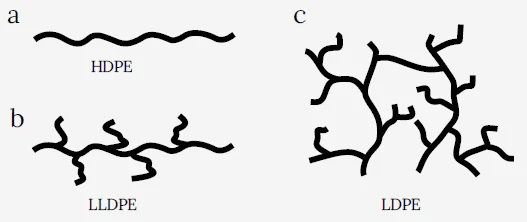
2. Manufacturing Processes
The production of LDPE, LLDPE, and HDPE involves distinct polymerization processes, which directly influence their final molecular structures and, consequently, their physical and chemical properties.
LDPE Production
LDPE is primarily produced through high-pressure polymerization of ethylene gas using a free-radical initiation mechanism. This process involves extreme conditions, typically with temperatures ranging from 150 to 300 degrees Celsius and pressures between 1,000 to 3,000 atmospheres. The high-pressure environment, combined with the free-radical reaction, leads to frequent chain transfer reactions, resulting in the formation of a highly branched polymer with both long and short side chains. This extensive branching is the direct cause of LDPE’s low density and high flexibility.
HDPE Production
HDPE is manufactured through low-pressure polymerization processes, predominantly using Ziegler-Natta catalysts or metallocene catalysts. These catalysts facilitate the polymerization of ethylene at much lower pressures (typically 10-80 atmospheres) and temperatures (50-150 degrees Celsius) compared to LDPE production. The catalytic action promotes a highly linear polymerization, leading to a polymer with minimal branching. The resulting high degree of crystallinity and compact packing contributes directly to HDPE’s characteristic strength, rigidity, and high density.
LLDPE Production
LLDPE is also manufactured using low-pressure polymerization techniques, similar to HDPE, such as gas-phase or solution-phase processes. However, the key difference lies in the copolymerization step: ethylene is copolymerized with other alpha-olefins (like butene, hexene, or octene). This precise control over the introduction of co-monomers allows for the formation of short, uniform branches along the linear backbone. This method enables fine-tuning of the molecular weight and branching structure, resulting in a material that ingeniously balances the flexibility of LDPE with the enhanced strength and toughness associated with more linear polyethylenes. This controlled branching is what makes LLDPE distinct in the LDPE LLDPE family.
3. Physical and Chemical Properties
The intrinsic differences in molecular structure among LDPE, LLDPE, and HDPE directly translate into their distinct physical and chemical properties, dictating their suitability for various applications.
LDPE Properties
- Density: Approximately 0.910 to 0.940 g/cm³, making it the lowest density polyethylene.
- Melting Point: Around 105-115°C (221-239°F).
- Flexibility: Highly flexible, soft, and elastic, making it easy to stretch and deform.
- Toughness: Good impact strength and high resilience, meaning it can absorb energy without breaking.
- Chemical Resistance: Good resistance to acids, bases, and vegetable oils, but limited resistance to some organic solvents (e.g., chlorinated hydrocarbons).
- Clarity: Often translucent or transparent, making it suitable for clear films.
- Puncture Resistance: Relatively poor due to its softer nature.
LDPE’s flexibility and ease of processing make it ideal for applications such as plastic bags, films (e.g., cling wrap, shrink wrap), squeeze bottles, and cable insulation.
HDPE Properties
- Density: Approximately 0.941 to 0.970 g/cm³, making it the highest density polyethylene.
- Melting Point: Around 120-130°C (248-266°F), higher than LDPE and LLDPE.
- Strength: Very high tensile strength, stiffness, and hardness.
- Impact Resistance: Excellent impact resistance, even at low temperatures.
- Chemical Resistance: Superior resistance to most solvents, acids, bases, and greases.
- Environmental Stress Cracking Resistance (ESCR): Generally excellent, making it resistant to cracking under stress in the presence of certain chemicals.
- Clarity: Opaque to translucent.
HDPE is widely used in applications such as rigid bottles (milk jugs, detergent bottles), large containers (drums, fuel tanks), crates, piping systems (water, gas), and toys due to its robustness and durability. The LDPE vs HDPE comparison highlights HDPE’s superior rigidity.
LLDPE Properties
- Density: Approximately 0.915 to 0.940 g/cm³, overlapping with LDPE, but often achieving higher strength at similar densities.
- Melting Point: About 120-130°C (248-266°F).
- Flexibility: Flexible and tough, balancing the properties of LDPE and HDPE.
- Strength: Higher tensile strength, elongation, and puncture resistance compared to LDPE.
- Impact Resistance: Excellent impact and tear resistance, making it very durable.
- Chemical Resistance: Good resistance to chemicals, often with improved Environmental Stress Cracking Resistance (ESCR) compared to LDPE.
- UV Resistance: Can be formulated with good UV resistance for outdoor applications.
- Clarity: Good clarity for film applications.
LLDPE is commonly used in stretch films, agricultural films, heavy-duty bags, geomembranes, and flexible packaging materials due to its enhanced strength, durability, and puncture resistance, making the LLDPE vs LDPE comparison crucial for these uses.
Detailed Comparison of Properties: LLDPE vs LDPE vs HDPE
| Property | LDPE | LLDPE | HDPE |
|---|---|---|---|
|
Density (g/cm³) |
LOW | LOW | HIGH |
| Branching | HIGH | Moderate | LOW |
| Flexibility | HIGH | Moderate | LOW |
| Toughness/Impact Resistance | HIGH | HIGH | Moderate |
| Stiffness | LOW | Moderate | HIGH |
| Chemical Resistance | GOOD | GOOD | Excellent |
| Environmental Stress Cracking Resistance | POOR | GOOD | Excellent |
| Tensile Strength | Lower | Higher (than LDPE) | Highest |
| Puncture Resistance | Poor | Excellent | Moderate to good |
| Clarity | Good (translucent/clear) | Good (translucent/clear) | Opaque |
| Melting Point | 105-115°C | 120-130°C | 120-130°C |
This table clearly illustrates the graduated differences between LDPE, LLDPE, and HDPE, guiding selection based on specific mechanical and thermal requirements.
4. Applications of LDPE, LLDPE, and HDPE
The unique properties of each polyethylene type make them suitable for a distinct range of applications across different industries.
| LDPE (Low-Density Polyethylene) | LLDPE (Linear Low-Density Polyethylene) | HDPE (High-Density Polyethylene) |
|---|---|---|
| Packaging: LDPE is extensively used in the production of plastic bags, wraps, and films due to its flexibility and lightweight nature. | Stretch Films: LLDPE is commonly used in stretch films for packaging due to its high strength and elasticity. | Containers and Bottles: HDPE is widely used for manufacturing containers, bottles, and jugs due to its strength and chemical resistance. |
| Containers: It is also used for manufacturing squeeze bottles and other containers that require a certain degree of flexibility. | Agricultural Films: It is employed in agricultural applications for greenhouse covers and mulch films, providing durability and UV resistance. | Piping Systems: Its durability and resistance to corrosion make HDPE an ideal choice for piping systems in water and gas distribution. |
| Insulation: LDPE is utilized in electrical insulation and as a protective layer in various applications. | Flexible Packaging: LLDPE is also used in the production of flexible packaging materials that require both strength and flexibility. | Geomembranes: HDPE is used in environmental applications such as landfill liners and containment systems due to its impermeability. |
5. Environmental Considerations
As the world increasingly focuses on sustainability and circular economy principles, the environmental impact and recyclability of polyethylene materials have come under significant scrutiny. The differences in structure and common applications influence their recycling streams.
LDPE and Recycling
LDPE (Recycling Code #4) is technically recyclable, but its recycling rates are relatively low compared to HDPE or PET. This is largely because flexible LDPE film products (like plastic bags and wraps) are often not accepted in curbside recycling programs due to their tendency to tangle machinery. This leads to a significant amount of LDPE waste ending up in landfills. However, initiatives to improve collection, sorting technologies, and consumer awareness (e.g., store drop-off programs for plastic bags) are underway to boost LDPE recycling.
HDPE and Recycling
HDPE (Recycling Code #2) boasts one of the highest recycling rates among all plastics. Its rigid nature (bottles, jugs) makes it easily identifiable and processable in standard recycling facilities. Recycled HDPE can be transformed into a wide array of new products, including piping, plastic lumber, outdoor furniture, crates, and new non-food containers, making it a poster child for successful plastic recycling.
LLDPE and Recycling
LLDPE (often recycled with #4 LDPE) is also recyclable, and its enhanced properties (strength, puncture resistance) make it suitable for various recycled products. The recycling process can yield high-quality materials for new applications, particularly in secondary film products. However, similar challenges in recycling rates exist for LLDPE films as with LDPE, often requiring specialized collection or separate processing streams.
LLDPE vs. LDPE: Understanding the Differences
While both are “low-density” polyethylenes, the comparison of LLDPE vs. LDPE reveals crucial distinctions in their molecular structure, physical properties, and processing characteristics, directly impacting their applications.
Molecular Structure
- LDPE: Characterized by a highly branched polymer chain, LDPE has numerous long and short side branches that prevent the molecules from packing closely together. This irregular structure results in a less dense material with increased flexibility and a more amorphous nature.
- LLDPE: LLDPE possesses a more linear backbone with numerous short, uniform branches. This configuration allows the polymer chains to pack more tightly and orderly than LDPE, enhancing overall crystallinity and intermolecular forces while still maintaining significant flexibility.
Physical Properties
| Property | LDPE | LLDPE |
|---|---|---|
| Density (g/cm³) | 0.910–0.940 | 0.915–0.940 |
| Tensile Strength | Lower | Higher |
| Flexibility | HIGH | Very High |
| Impact Resistance | Moderate | HIGH |
| Puncture Resistance | Lower | Higher |
| Environmental Stress Crack Resistance (ESCR) | Lower | Higher |
| Environmental Stress Cracking Resistance | POOR | GOOD |
Processing Characteristics
- LDPE: Due to its highly branched structure, LDPE exhibits excellent processability. It flows easily during extrusion and molding, making it suitable for applications requiring high clarity, thin films, and easy processing. It has lower viscosity and less shear sensitivity.
- LLDPE: While LLDPE offers superior strength and durability properties, its more linear structure can make processing slightly more challenging. It typically has higher melt viscosity and is more shear-sensitive than LDPE, requiring precise control during extrusion to achieve optimal film properties and avoid melt fracture.
Common Applications
- LDPE: Commonly used in applications where high flexibility, softness, and clarity are essential, such as plastic bags, film wraps (cling film, shrink wrap), squeeze bottles, and cable insulation.
- LLDPE: Preferred for products requiring higher strength, puncture resistance, and tear resistance, including stretch films, heavy-duty refuse bags, agricultural films (e.g., geomembranes, greenhouse covers), and durable flexible packaging. The LLDPE vs LDPE choice often comes down to these mechanical performance needs.
Conclusion
n conclusion, LDPE, LLDPE, and HDPE are all indispensable types of polyethylene, yet they possess distinct properties and applications stemming from their fundamental molecular structures.
- LDPE is characterized by its extensive branching, making it the most flexible and soft, ideal for plastic bags, films, and highly pliable containers.
- LLDPE, with its numerous short, uniform branches, strikes a balance, offering enhanced strength, puncture, and tear resistance while maintaining flexibility, making it ideal for stretch wrap films, heavy-duty bags, and agricultural applications where durability is key. The LLDPE vs LDPE comparison highlights this performance upgrade.
- HDPE, with its minimal branching and highly linear structure, is the most rigid and durable, commonly used in products requiring high tensile strength, stiffness, and chemical resistance, such as bottles, pipes, and robust containers. The LDPE vs HDPE and LLDPE vs HDPE distinctions are clear in terms of rigidity.
The choice among LDPE, LLDPE, and HDPE ultimately depends on the specific requirements of the application, including desired flexibility, strength, chemical resistance, temperature performance, and cost. By understanding these key differences between LDPE, LLDPE, and HDPE, engineers, designers, and manufacturers can make informed decisions to select the optimal polyethylene plastic for their needs, leveraging the unique strengths of each grade to create efficient and effective solutions.


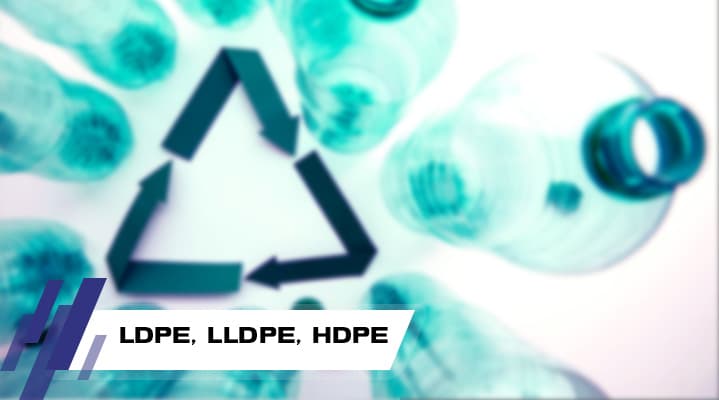
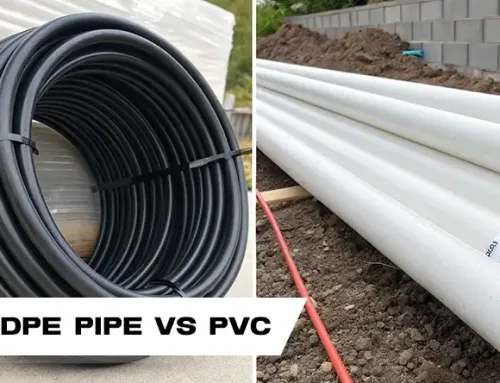
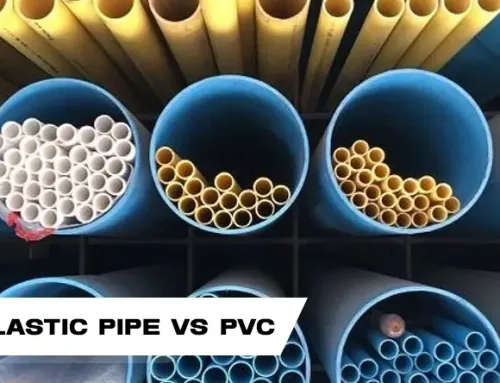

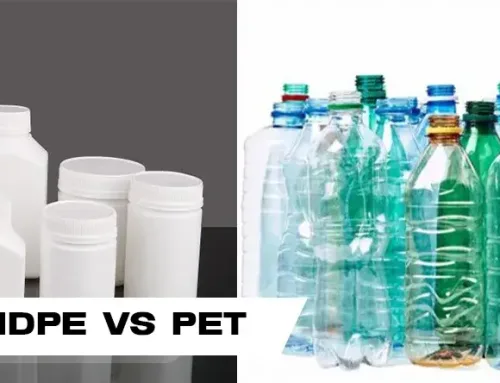
Leave A Comment